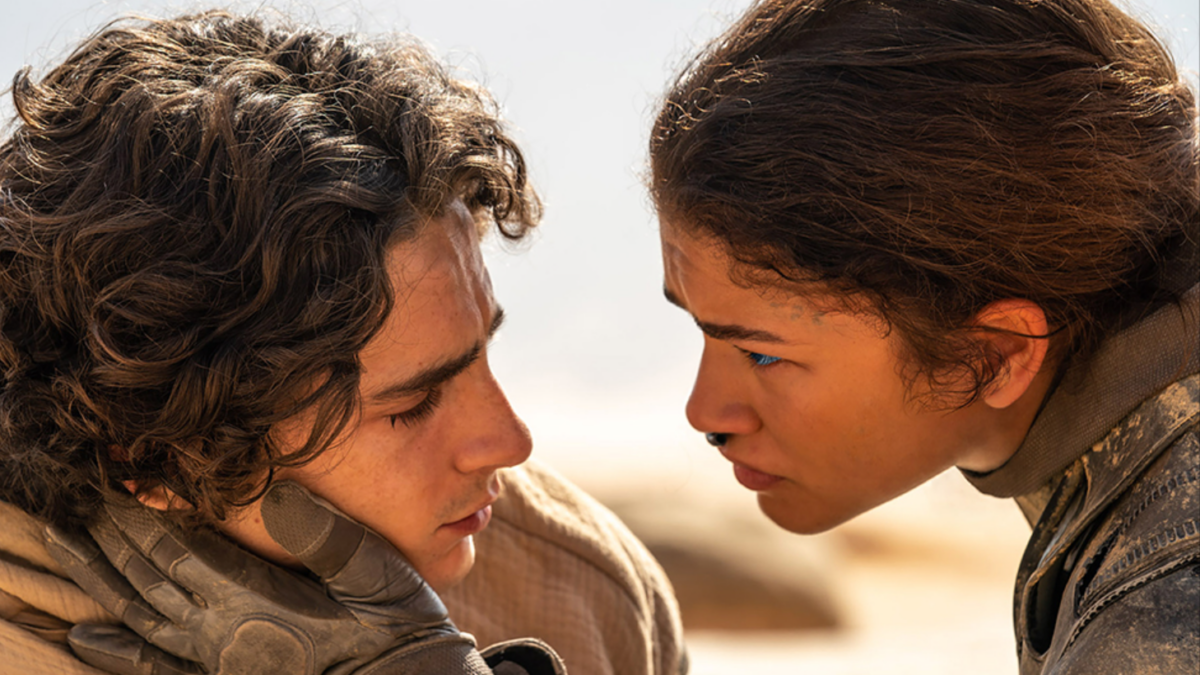Sometime in autumn 1992, I walked out of Michael Mann’s “The Last of the Mohicans” exhilarated and ready to sit through at least another hour of that movie. Almost exactly 25 years later, I walked out of Villeneuve’s “Blade Runner 2049” convinced I had just watched a masterpiece that I would need to watch again several more times before unpeeling it to its essential core.
Nearly seven years after that, Villeneuve’s “Dune: Part Two” has me feeling like the first times I walked out of both those other movies. It is an unusually long film — you’ll easily spend over three hours total in the theater — that moves with deliberation and layers its narratives deep. It is also a film that, with its pieces carefully assembled across its first two hours, accelerates upward asymptotically in speed, scope, and stakes. It begins as a small tale of refugees in exile, and its penultimate scene is the inception of a galactic jihad. When you get there, it makes sense to have gotten there because there was nowhere else to go.
A few notes on the production are in order. The visual design of “Dune: Part Two” is simply extraordinary and better than you’ve heard. Its aesthetic is a weird admixture of art deco, Moebius and the bande dessinée, Arabesque, and in the scenes on Giedi Prime, the black pits of hell. The visuals are alternately stark and gorgeous, or so detailed and vivid — almost a photographic ligne claire style — that the eye cannot take it all in. In the inspired decision to film the Harkonnen homeworld in infrared, yielding a searing black-and-white unlike anything else, the alien palette and brutal monumentalist architecture had me deeply unsettled. I thought, to my surprise, that this is a world without God.
The acts of God, and the nature of prophecy and messianism, are at the heart of the “Dune” narrative, although there is curiously little about the Deity and a great deal about prophets, whose actions are more worldly (or, by the end, worlds-ly) than transcendent. Some of this mirrors author Frank Herbert’s understanding of the Islamic mythos upon which the religion and society of Arrakis are patterned. Its in-text explanation is that religion is manipulation and artifice until it is not. Whether it becomes true by reason of belief, or was always true independent of belief, is left to the viewer to discern.
Embedded within this progress from religion as manipulative fiction to religion as sword-wielding fact is the fulfillment of the true believers, who have the ecstatic release of living to see their faith and prophecies vindicated, and are steadily reduced from complex persons of aspiration to flat fanatics because of it. “Dune” has many tragedies, and this is one of them, easy to miss among the narratives but the most consequential for the galaxy at their mercy.
The casting is excellent, except for Zendaya, whose accent, demeanor, and belief are simply inconsistent with the whole of Fremen society. Her Chani is reconceived by Villeneuve as a skeptical voice against the messianic rise of Mua’dib, and it falls flat, rendering her an outsider to her own nation and culture — contradicting her own professed motivations — and demanding more subtlety of her acting than she can credibly give. Souheila Yacoub, cast as her friend Shishakli — a man in the book, a woman here — is vastly more plausible and delivers more emotional range in a tenth of Zendaya’s screen time.
Yet this one misfire barely dents the whole of the film, and neither does the other in the deficient writing (not acting) for Dave Bautista’s Glossu Rabban. The rest of the cast is propulsively good, with the clear standout being Rebecca Ferguson’s Lady Jessica, who is easily the Scarlett O’Hara of the piece: a woman who lived through ruin and will now do anything, including goading her son into helming a war killing trillions, to see restoration and revenge.
Does “Dune: Part Two” surpass my all-time favorite film, 1962’s “Lawrence of Arabia”? The question is irrelevant, because the “Dune” arc, in the triumph and tragedy of Paul Mua’dib Atreides, is “Lawrence of Arabia.” The 1962 film, which is almost exactly a full hour longer than “Dune: Part Two,” is being remade as a three-movie science-fiction epic now by Villeneuve. That isn’t explicit, of course, but it is easily imagined and the template is the same. The 2024 film brings us to the moment when Lawrence believes his own legend and power, and the tribes do too, and he will remake the world. Deraa and the Damascus parliament still lie ahead. One is the other, and they are both warnings: The true enemy is neither Turk nor Harkonnen, but oneself. Nothing is written, which both Lawrence and Atreides once knew.
There is the old tale that Zhou Enlai told Kissinger it was too soon to tell the importance of the French Revolution — after all, it had only been hardly two centuries. It is also too soon to tell what “Dune: Part Two” truly is as a film. It must be seen again, and probably again, and in the fullness of time set into the context of the two films that will bookend it. But it is not too soon to say how it made me feel — as I began, in exhilaration and contemplation. It is masterful and tremendous, worth your time and money, and I commend it to you.
The spice must flow.









